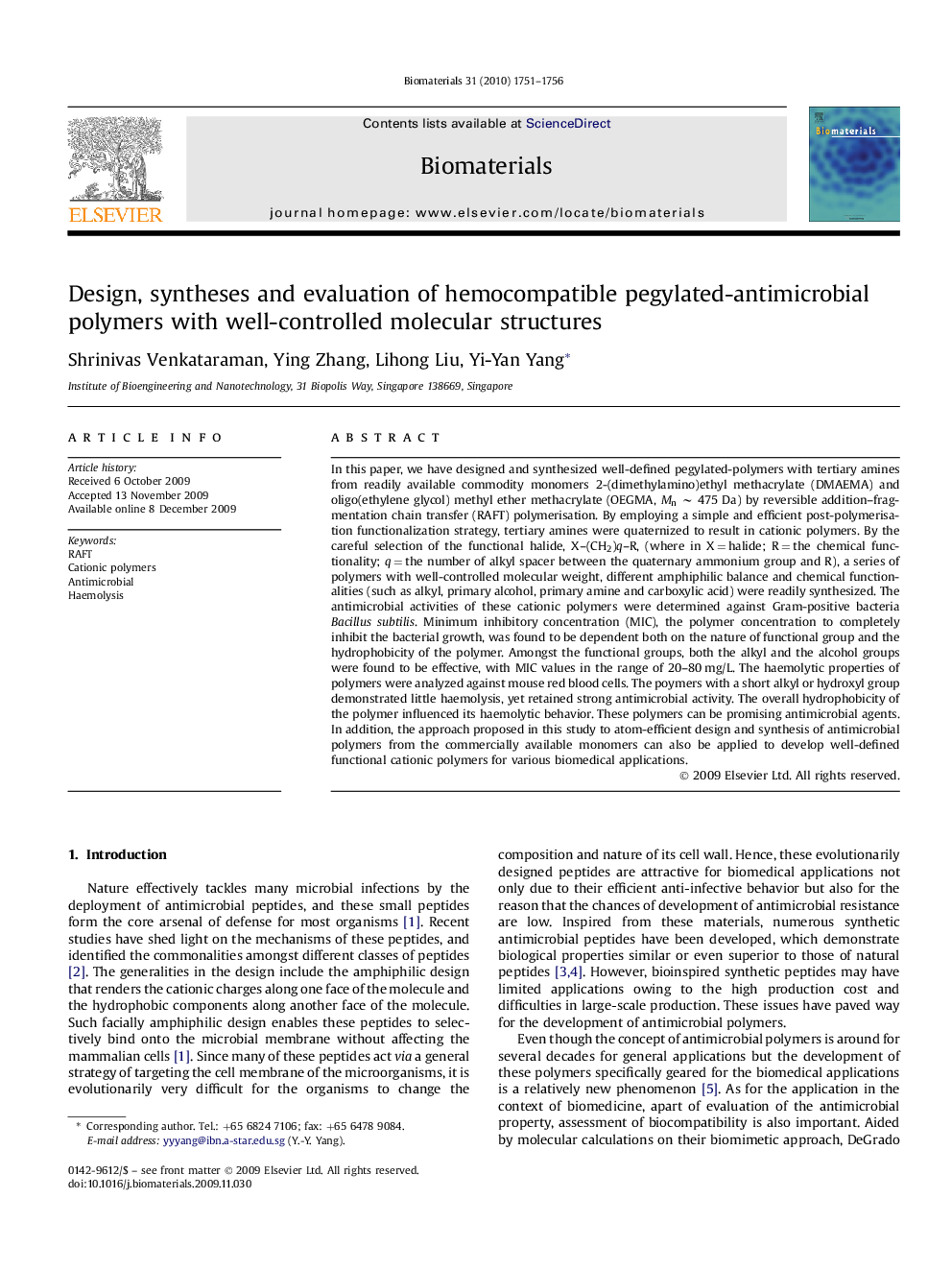| کد مقاله | کد نشریه | سال انتشار | مقاله انگلیسی | نسخه تمام متن |
|---|---|---|---|---|
| 9361 | 627 | 2010 | 6 صفحه PDF | دانلود رایگان |

In this paper, we have designed and synthesized well-defined pegylated-polymers with tertiary amines from readily available commodity monomers 2-(dimethylamino)ethyl methacrylate (DMAEMA) and oligo(ethylene glycol) methyl ether methacrylate (OEGMA, Mn ∼ 475 Da) by reversible addition–fragmentation chain transfer (RAFT) polymerisation. By employing a simple and efficient post-polymerisation functionalization strategy, tertiary amines were quaternized to result in cationic polymers. By the careful selection of the functional halide, X–(CH2)q–R, (where in X = halide; R = the chemical functionality; q = the number of alkyl spacer between the quaternary ammonium group and R), a series of polymers with well-controlled molecular weight, different amphiphilic balance and chemical functionalities (such as alkyl, primary alcohol, primary amine and carboxylic acid) were readily synthesized. The antimicrobial activities of these cationic polymers were determined against Gram-positive bacteria Bacillus subtilis. Minimum inhibitory concentration (MIC), the polymer concentration to completely inhibit the bacterial growth, was found to be dependent both on the nature of functional group and the hydrophobicity of the polymer. Amongst the functional groups, both the alkyl and the alcohol groups were found to be effective, with MIC values in the range of 20–80 mg/L. The haemolytic properties of polymers were analyzed against mouse red blood cells. The poymers with a short alkyl or hydroxyl group demonstrated little haemolysis, yet retained strong antimicrobial activity. The overall hydrophobicity of the polymer influenced its haemolytic behavior. These polymers can be promising antimicrobial agents. In addition, the approach proposed in this study to atom-efficient design and synthesis of antimicrobial polymers from the commercially available monomers can also be applied to develop well-defined functional cationic polymers for various biomedical applications.
Journal: Biomaterials - Volume 31, Issue 7, March 2010, Pages 1751–1756